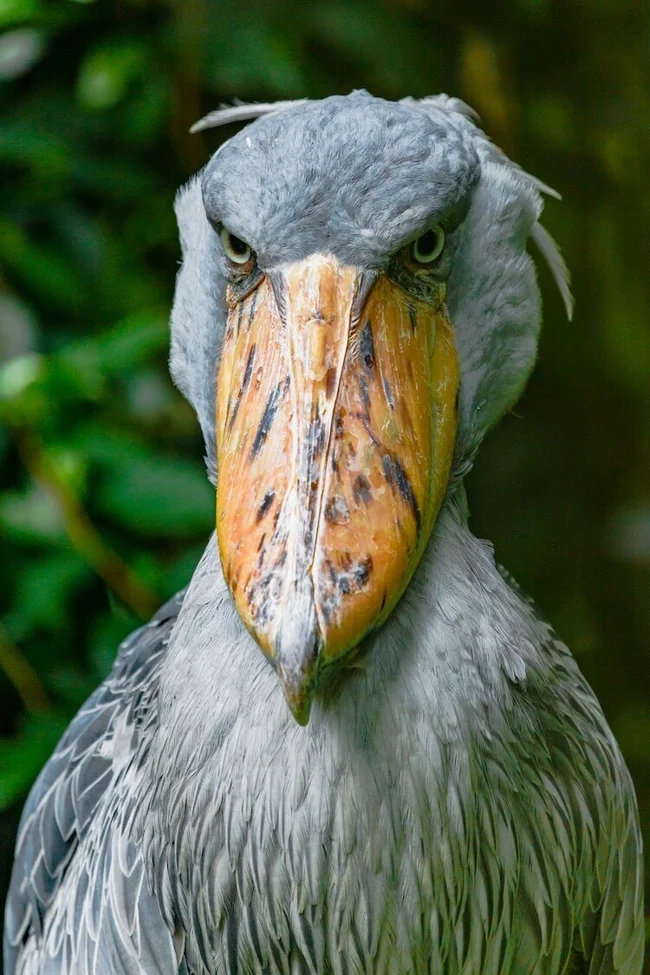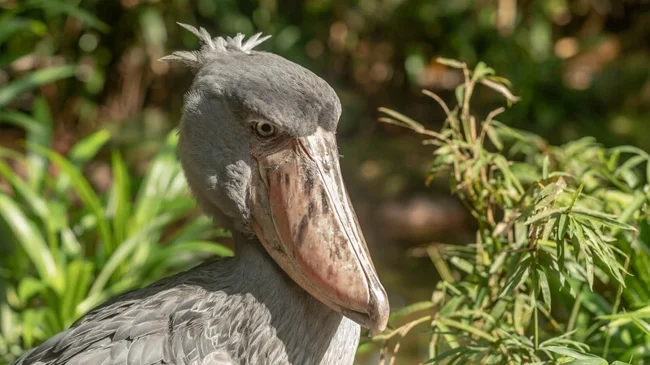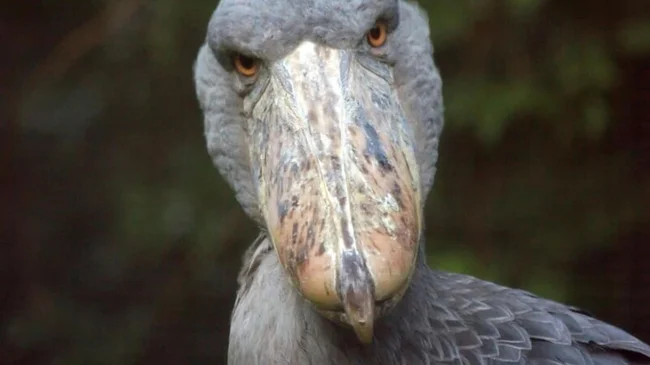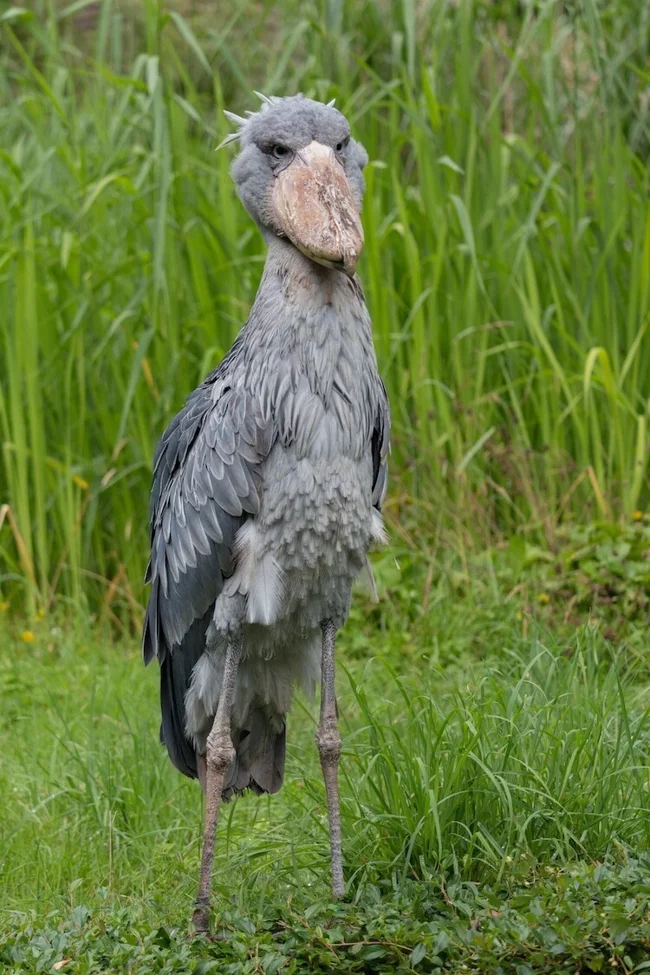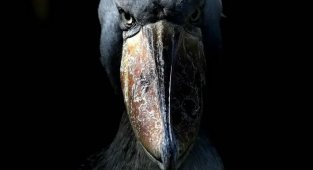Shoebill: an unusual bird with a giant beak (12 photos + 1 video)
In nature there are a variety of inhabitants, which sometimes amaze with their unusual appearance. Shoebill is one of these inhabitants. This 1.2 meter tall bird stands out among its relatives with its huge beak and extremely serious appearance. Let's find out some interesting things about her! 
Where do shoebills live? 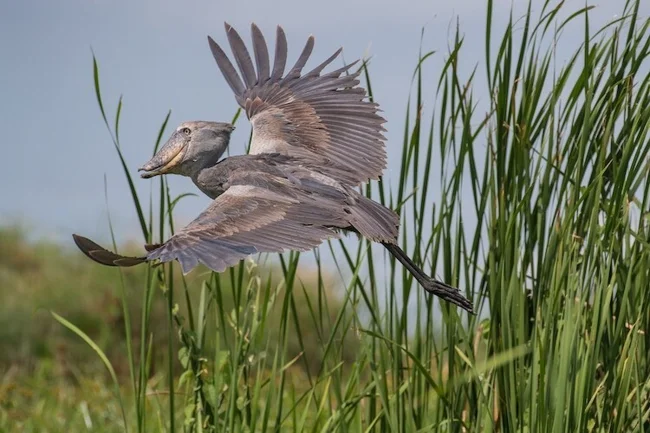
Shoebill (Balaeniceps rex) is a bird from East Africa that belongs to the pelican order. These large birds live in the swamps of East and Central Africa. Thanks to their long and thin legs, they can easily make their way through the vegetation of swamps and swamps from Ethiopia to Zambia. They can reach 1.2 meters in height with a wingspan of 2.3 meters, making them quite fearsome. What is most striking is their huge beak, the length of which is more than 40 cm.
What do they eat? 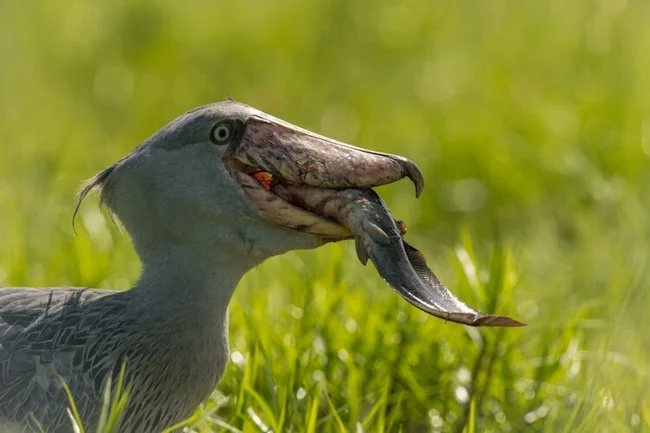
Fortunately, this bird is not dangerous to humans - just don’t make it angry so that it doesn’t peck. The main component of the shoebill diet is fish. Most of all they feast on tilapia, protoptera, and catfish. But they can also hunt monitor lizards, baby crocodiles, turtles and frogs. Another interesting feature is that shoebills can stand motionless for hours, waiting for the right moment to catch their prey. Having waited for the moment, the bird abruptly “scoops up” the fish with its beak along with the water.
What is their lifestyle like? 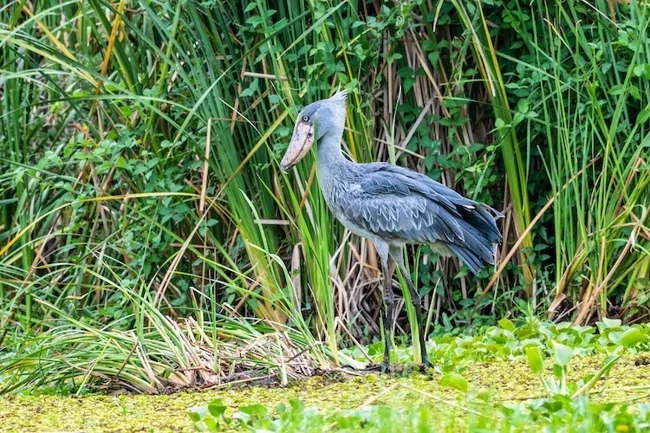
Shoebills do not live in groups. Even mating pairs live in different places and search for food in different areas. In the wild they can live for almost 36 years. Their main enemies are egg-stealing predators, which forces them to build their nests in hard-to-reach places. At the same time, shoebills are not afraid to show aggression, protecting their nest from predators.
Why are there fewer of them? 
Unfortunately, the main “predator” for shoebills is humans. Habitat destruction and industrial pollution are degrading the habitat of these birds. They are also hunted in some areas, partly because they are considered bad weather birds. Currently, the IUCN estimates that there are between 3,300 and 5,300 adult shoebills left in the wild. Most individuals live in South Sudan, Uganda, Tanzania and Zambia. There are several shoebills in captivity at the Tampa Zoo in Florida, USA, and at the Dallas World Aquarium in Texas. 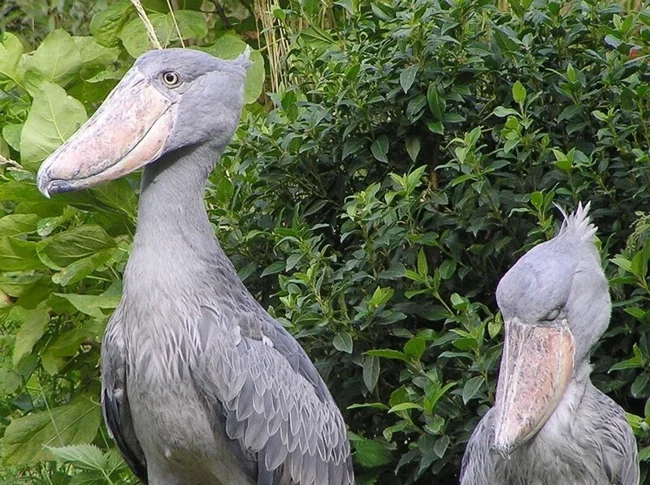
Take a look at these beauties: 